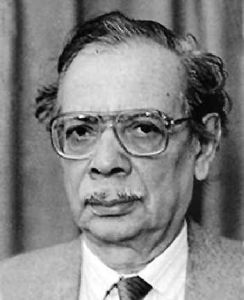DNAIndia has the text of a nazm by Jawed Akhtar about the Mumbai bomb blasts or, more generally, terrorism:
http://www.dnaindia.com/report.asp?NewsID=1042659
Technorati tags applicable to this post: Urdu - India - Terrorism
اُردو ہے جِس کا نام ہمی جانتے ہیں داغ
سارے جھاں میں دھوم ہماری زُباں کی ہے
kaun kehtha hai kay mauth aayee tho marjaa'ongaor
main thoe dharya hoon samandhar main uthar jaa'onga
Who says that when death comes, I will die away?The Wikipedia article on Qasmi Saahab can be found at:
I am a river and into the ocean will I flow away
http://en.wikipedia.org/wiki/Ahmad_Nadeem_QasimiOf course, in this day and age, where a lot of us go to express our grief and share our loss is the Internet. There are now quite a few websites where one can find Urdu poetry and pictures of Qasmi Saahab. Here' a selection:
http://www.urdulife.com/mushaira/poet.cgi?anq_ahmed_nadeem_qasmiAnd in Unicode (meaning it is written in Urdu and easier to read, and you can make it bigger, etc. like you would English text), we have:
http://tinyurl.com/rsyob
http://www.urdulife.com/forum/index.php?showforum=65On a personal note, I just noticed a post on the BBC Urdu blog from Musaddaq Sanwal, someone I knew, as they say, in another life:
http://www.bbc.co.uk/blogs/urdu/2006/07/post_12.htmlAnd from the UAE, Syed Saghier Ahmed Jafri Saahab and Urdu Manzil send the picture above and the following links for poetry:
http://www.urdumanzil.com/adab_nama/allmi_mushaira/index.htmland photographs:
http://www.urdumanzil.com/adab_nama/qasmivisit/index.html
http://www.urdumanzil.com/adab_nama/pics/photo-10.htmlThe post on Pakistaniat: All Things Pakistancan be found at:
http://www.urdumanzil.com/adab_nama/pics/photo-14.html
http://pakistaniat.wordpress.com/2006/07/11/ahmed-nadeem-qasmi/Technorati tags applicable to this post: Urdu - Poets - Ahmed Nadeem Qasmi
 SHANUL HAQ `Haqqee' died in October 2005, at age 88. For some, he was the grand old man of lexicography; for many, of the Urdu ghazal. For me he was a friend.
SHANUL HAQ `Haqqee' died in October 2005, at age 88. For some, he was the grand old man of lexicography; for many, of the Urdu ghazal. For me he was a friend.
| آداب | Adaab, |
| فقیر-i | iFaqeer |
| آداب | Adaab, |
| فقیر-i | iFaqeer |
South African Urdu Poetess of Indian origin - Rookeya Saloojee wrote Urdu couplets on South African anti-apartheid movement which are getting rave reviews. She also wrote 'naaths' (poems in praise of the Prophet Mohammad - PBUH), ghazals that were traditional love poems and protest anthems.
Rookeya composed her work - "Ode to 'Madiba'" on being inspired by Nelson Mandela when she visited him while he was at Robben Island prison. "Madiba" is the name by which Mandela is affectionately known to people of South Africa.
ANJUMAN Muhibban-e-Urdu Hind Qatar (AMUHQ), an Urdu organisation of Indian expatriates affiliated to the Indian Cultural Centre (ICC) under the aegis of the Indian embassy, held a Mushaira dedicated to famous Urdu poet Mirza Ghalib.
Read on for details
~~~~~~~~~~~~~~~~~~~~~~~~~~~~~~~~~~~~~~~~~~~~
Science Aur Kainat Society of India, a national level voluntary organisation working for the popularisation of science and technology for the last 20 years organised the release ceremony of the first issue of its monthly Urdu tabloid Science Aur Kainat at an impressive function in the Assembly Hall of AMU Boys Polytechnique on 16 April 2005.
Read Complete Story

 From Cemendtaur, who is currently in Karachi:
From Cemendtaur, who is currently in Karachi:'Meri AankhoN say dekho' (See it through my eyes), a book by young Bay Area poet Faisal Azeem has been published. The preface is written by Sahar Ansari. I will try to upload the title page and news of this publication. In Karachi, 'Meri AankhoN say dekho' is available at Welcome Book Port & Fareedsons, Urdu Bazaar; in North America, at this moment it is available through me--will try to put it at various online bookstores.
Congratulations to Faisal Azeem for reaching this very important milestone in his life.
| آداب | Adaab, |
| فقیر-i | iFaqeer |
Aadaab,
~ Qais
| آداب | Adaab, |
| فقیر-i | iFaqeer |